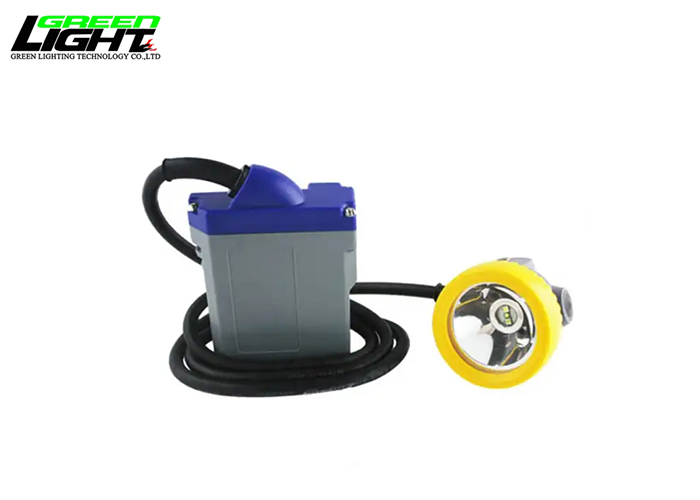





Environmental sensors for mining lights refer to integrated sensor systems designed to monitor and respond to environmental conditions in mining operations. These sensors are typically embedded within mining light fixtures to provide real-time data on factors such as air quality, temperature, humidity, and gas levels. By continuously monitoring environmental parameters, these sensors help optimize safety, efficiency, and productivity in mining environments.
Compliance and Regulations: Environmental sensors must comply with industry regulations and standards governing environmental monitoring and workplace safety.

Compliance with regulations ensures adherence to industry standards and best practices.
Environmental sensors for mining lights are designed to monitor various parameters such as air quality, temperature, humidity, and gas levels in the mining environment. They typically consist of sensor modules capable of detecting specific environmental factors, along with associated circuitry for data processing and transmission. Here's how they work:
Data Collection: Environmental sensors continuously collect data from their surroundings using built-in sensors. These sensors may include air quality sensors, temperature sensors, humidity sensors, and gas sensors, depending on the specific parameters being monitored.
Data Processing: The collected data is processed within the sensor unit using onboard processing algorithms. This processing may involve filtering out noise, calibrating sensor readings, and converting analog signals to digital data for transmission.
Wireless Transmission: In many cases, environmental sensors are equipped with wireless communication capabilities, allowing them to transmit data wirelessly to a central monitoring system. This enables real-time monitoring of environmental conditions from a remote location.
Alerting Mechanism: Environmental sensors may be programmed to trigger alerts or alarms when certain environmental parameters exceed predefined thresholds. These alerts can notify mine operators or workers of potential safety hazards or abnormal conditions that require attention.
Integration with Lighting Systems: Some environmental sensors are integrated directly into mining light fixtures, allowing for seamless deployment and minimal additional infrastructure. This integration ensures that environmental monitoring is closely tied to illumination, enhancing safety and efficiency in mining operations.

Safety: Environmental sensors play a crucial role in ensuring the safety of mining operations by continuously monitoring for potential hazards such as gas leaks, poor air quality, or extreme temperatures. Early detection of these hazards allows for timely intervention to prevent accidents or injuries.
Compliance: Mining operations are subject to strict safety regulations and environmental standards. Environmental sensors help mining companies comply with these regulations by providing accurate and real-time data on environmental conditions, demonstrating a commitment to safety and regulatory compliance.
Efficiency: By monitoring environmental conditions in real-time, environmental sensors help optimize the efficiency of mining operations. For example, sensors that detect ventilation airflow or humidity levels can help optimize ventilation systems, reducing energy consumption and improving overall operational efficiency.
Risk Mitigation: Environmental sensors help mitigate risks associated with hazardous conditions in mining environments. By providing early warnings of potential dangers such as gas leaks or poor air quality, these sensors enable proactive measures to be taken to mitigate risks and prevent accidents.
Data-driven Decision Making: Environmental sensor data provides valuable insights into environmental trends and patterns within mining operations. By analyzing this data, mine operators can make informed decisions regarding safety protocols, equipment maintenance, and operational planning, ultimately improving productivity and profitability.
What types of environmental parameters can be monitored with these sensors?
How are environmental sensors integrated into mining light fixtures?
Are environmental sensors wireless or wired?
Can environmental sensors be customized to meet specific mining site requirements?
How often should environmental sensors be calibrated?
What is the typical lifespan of environmental sensors used in mining applications?
How do environmental sensors contribute to mine safety?
Can environmental sensors be remotely monitored and controlled?
What measures are in place to ensure the reliability and accuracy of environmental sensor data?
How do environmental sensors contribute to environmental sustainability in mining operations?
Address: 2nd Floor, 1st Building , Concept Space Industrial Park, Baolong Street, Longgang District Shen Zhen City, China.518116 ------ Green Lighting Technology is a professional and leading mining lights manufacturer from China, provides led mining light, mining lamp, coal mining lights, mining lights for sale from mining lights factory, wholesale led mining light, mining lights, mining lamp, cordless mining light, mining head lamp, underground mining lights from green lighting technology enjoy high quality services and low price.